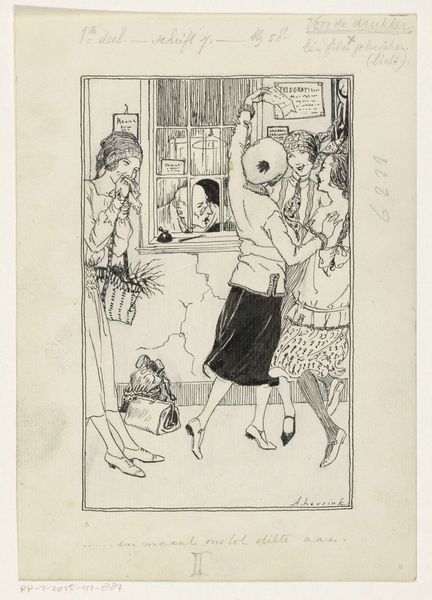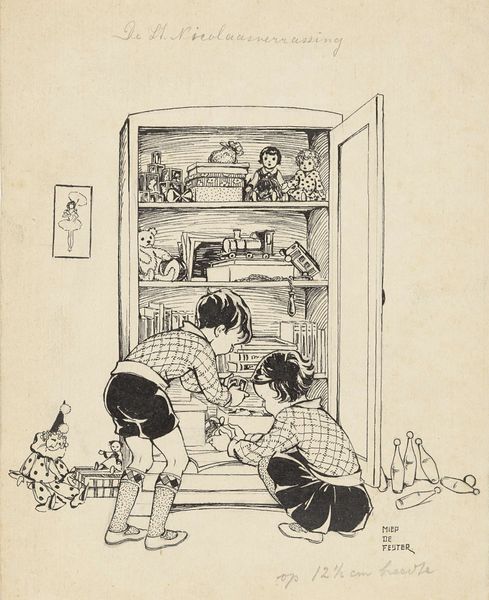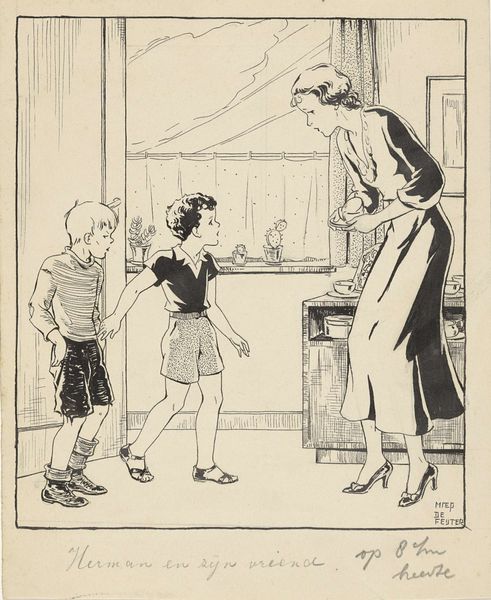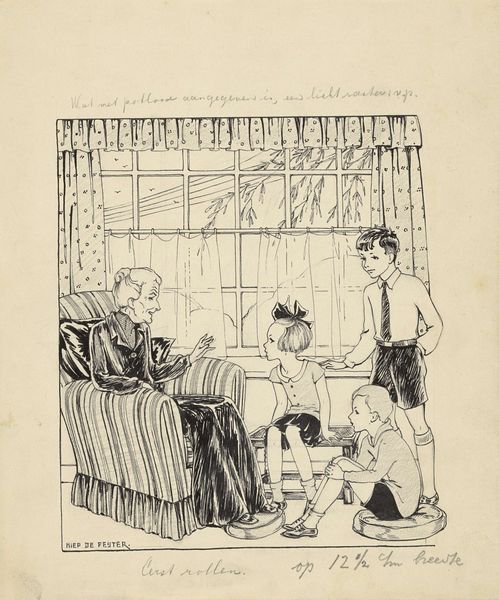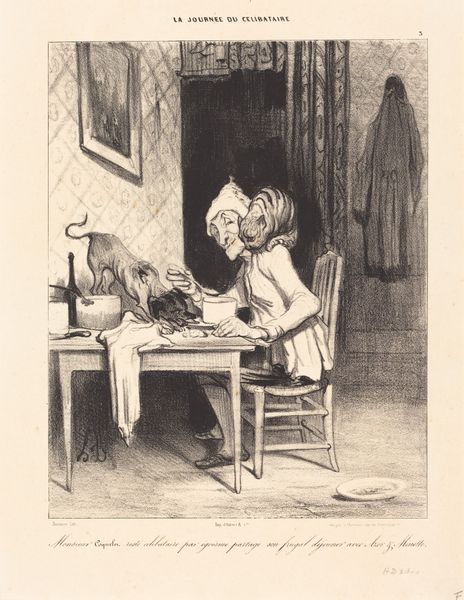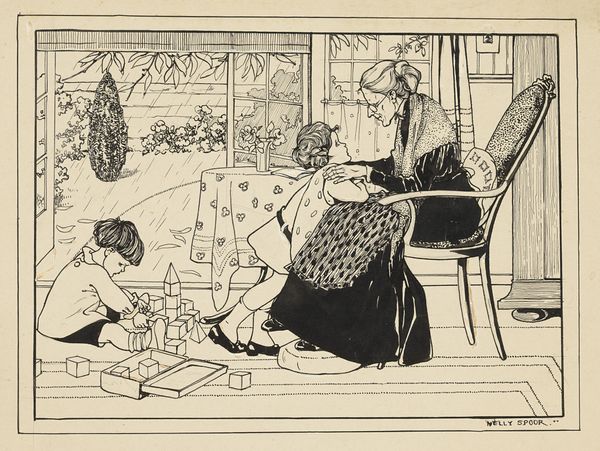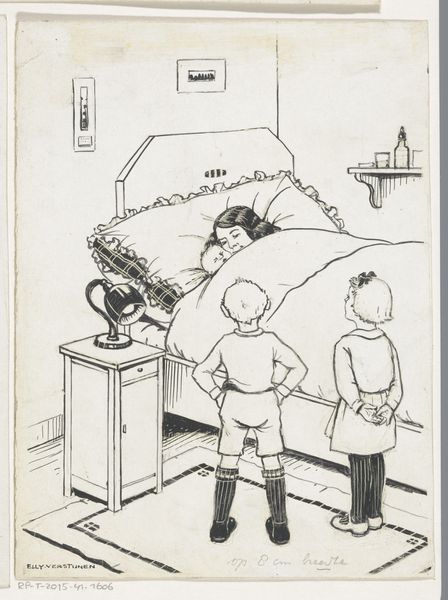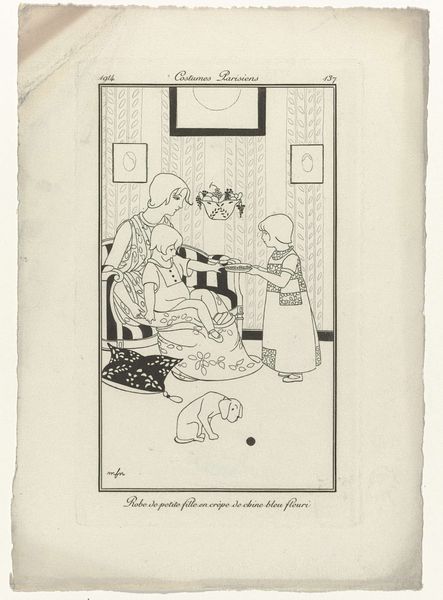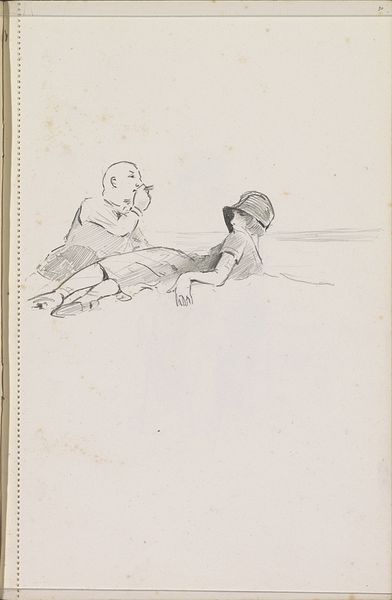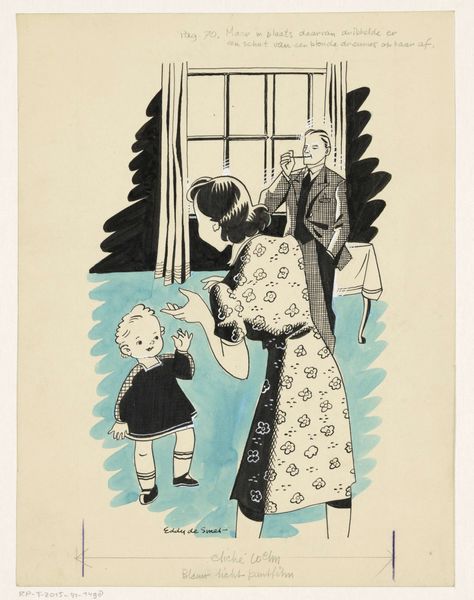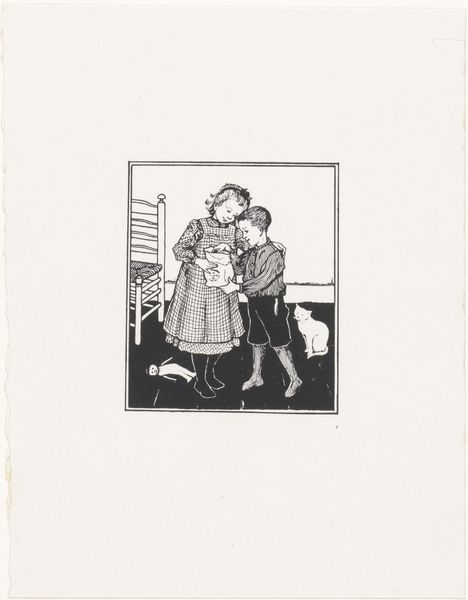
drawing, paper, ink, pencil
#
portrait
#
drawing
#
comic strip sketch
#
imaginative character sketch
#
quirky sketch
#
cartoon sketch
#
figuration
#
paper
#
personal sketchbook
#
ink
#
idea generation sketch
#
child
#
sketchwork
#
pencil
#
comic
#
sketchbook drawing
#
genre-painting
#
storyboard and sketchbook work
#
sketchbook art
Dimensions: height 261 mm, width 173 mm
Copyright: Rijks Museum: Open Domain
Curator: Here we have Miep de Feijter's "Twee kinderen bij een nest met kittens," or "Two Children with a Nest of Kittens," created sometime between 1928 and 1941. The medium appears to be ink and pencil on paper. Editor: It's instantly charming, isn't it? The composition is so simple, yet the balance is quite effective. I am captivated by the expressiveness achieved with such minimalist use of line. Curator: What strikes me is how this drawing potentially functions within the larger context of De Feijter’s production. Sketches like this were quite likely a crucial step in developing her illustration work. Were these works displayed independently, or primarily for studio usage? Editor: An interesting question, as it sits quite nicely as a vignette in and of itself. It seems self-contained, however. Do you think the visual weight distribution, specifically of the color blocking behind the young girl is an important structural consideration here? Curator: Yes, the touches of color serve an important formal purpose; yet this accent also has to do with social identity in her time. Coloring children in blue tones signifies their roles within the culture and gender expectations of that society. Also, considering wartime paper shortages might explain some material constraints impacting the color decisions of her creative choices. Editor: Perhaps, although I remain primarily interested in the interaction of form. The use of line to define form and space is exceptional, especially its implied presence through hatching. There is something also subtly unsettling about it that enhances the otherwise bucolic scene with a certain tension, as its lightness offers an interesting contrast. Curator: True, and it’s difficult to separate artistic choice from social influence when evaluating historical works like these, particularly as resources like paper and color become entwined with larger sociopolitical systems, so too must our analysis. Editor: Perhaps, however I find the intrinsic, balanced visual structures provide ample interpretive scope. Either way, this playful rendering is indeed captivating on closer inspection. Curator: It does provide many points of reflection indeed, viewing not just its formal artistry but as a microcosm reflecting its time of making.
Comments
No comments
Be the first to comment and join the conversation on the ultimate creative platform.
